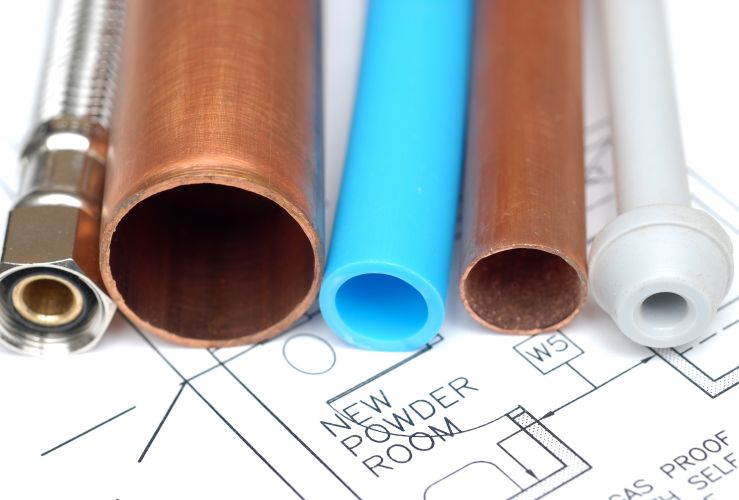
For more than a century, copper piping has been used in homes across the UK as a plumbing mainstay. But in the last 20 years, plastic piping has become more common - and is used by both plumbers and home DIY-ers.
But which is best for home DIY? Which is most effective? Which is the cheapest? Here we look at the pros and cons of each.
Ease and speed of fitting
Plastic piping uses push-fit joints, which house barbs that grip the piping. This is sealed with a rubber O-ring. Plastic push-fits are quick and easy to install. By contrast, copper joints require soldering - a skill in itself - and take longer to fit.
Which is cheapest?
Fitting plastic is generally cheaper because the joints and piping cost less than copper and are quicker to install - which means lower labour costs (which wouldn't be an issue if you’re doing it yourself). In addition, plastic piping can be bought in longer lengths, which can reduce requirement for joints and labour.
Best for confined areas
Plastic push-fit joints can be bulky, which might make them unsuitable for plumbing assemblies in cramped areas - such as spaces under sinks. However, soldering a copper joint may present fire risks in some situations, although carrying out soldering in a safe location before fitting an assembly may be possible.
Which can cope with most pressure?
While opinions among plumbers can differ, both plastic and copper piping joints are usually tested up to 10 bar - 100psi - which covers most domestic usage situations.
Which lasts longest?
Copper joints and piping, when fitted well, can outlast the life of a property. By contrast, plastic piping systems are thought to last up to 25 years, in part because the rubber seals degrade. But because plastic piping has only been around for about two decades, how long it really lasts is not definitively known.
Which does your insurance company prefer?
Some insurance firms have restrictions on where plastic piping can be fitted and in general see plastic assemblies as a potential risk - possibly because they are relatively new. We recommend checking your insurance policy before you go ahead with plastic piping.
Which looks most presentable?
This is a matter of taste, but copper arguably has a more classic appeal - especially important if pipes are visible. Plastic pipes can look cheaper - and indeed are.
Which is best for boilers?
Copper must be used for boilers. Plastic cannot be used with boilers under any circumstances.
Which is best for DIY-ers?
For those with little or no plumbing experience, plastic push-fits are the best option, mainly because they do not require soldering - which requires solder equipment and training. Soldering can also present a fire risk.




